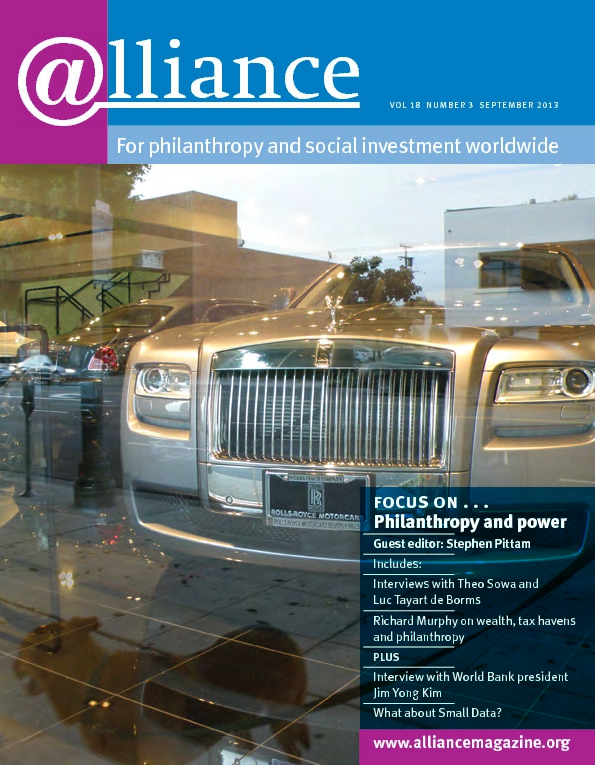In recent years, there has been an explosion of new forms of community philanthropy organizations around the world, with community foundations, women’s funds, environmental funds and other types of indigenous grassroots grantmakers emerging across Africa, Asia, Latin America and Eastern Europe. Although these organizations are diverse in many ways, three key features tend to define their work: unlocking local philanthropic resources and community assets; strengthening the capacities of local groups so that they can act and speak for themselves; and building trust between different sections of the communities they work with.
By focusing specifically on these three elements – which can be summarized as ‘assets’, ‘agency’ and ‘trust’ – these new-generation community philanthropy organizations are making an important contribution to the debate around philanthropy and power by moving away from some of the traditional power dynamics associated with donor-beneficiary relations towards flatter hierarchies and more ‘horizontal’ relationships with their partners and communities.
Community philanthropy and social justice cannot always be assumed to be natural bedfellows. Community foundations, in particular, have not always received a good rap when it comes to managing power relations among their different constituents. Part of the problem lies with the community foundation’s own institutional make-up, which can be both a curse and blessing. Unlike endowed foundations, community foundations are often entirely dependent on donations from the public from one year to the next. In these circumstances, it may be difficult to embrace a social justice approach which may challenge the views of the majority of the community or, worse still, alienate its more wealthy, conservative donors.
At the same time, the multi-stakeholder and multi-donor structure of community foundations can offer a unique mechanism for cross-community engagement. They can bring diverse people and interests together through grantmaking programmes, collaborative funding mechanisms and community meetings. Indeed, it is precisely the democratic structure of the community foundation form, and its ability to balance and bridge the interests of its different constituents, that has made it so appealing in different contexts around the world, particularly in communities mired in conflict, division, poverty and distrust.
Many new and emerging community philanthropy institutions have sought to promote community members’ participation both in their own structures and programmes and in the community at large. In Palestine, for example, the Dalia Association established a system of public voting for a set of small grants to local community groups in its ‘Village Decides’ programme. Although the grants themselves were important to the groups that received them, the overall objective of the programme was to encourage community members to see themselves as participants and decision-makers in local development processes for once rather than as passive recipients, always on the receiving end of aid programmes developed externally.
Meanwhile in Egypt the Community Foundation for South Sinai, which serves historically marginalized Bedouin communities, has used its modest resources to promote broad democratic participation. Following Egypt’s revolution in January 2011, the foundation led in a series of community-wide consultations aimed at promoting civic participation, particularly among women and youth, in the new Egypt. As a result of community meetings held in 60 different locations, 12 Bedouin stood for election and over 4,000 registered themselves as voters in the election that followed.
No matter where they are located, the multi-stakeholder nature of community philanthropy organizations means that they will always have to deal with the tension that arises from juggling donor interests and pursuing social justice imperatives. Indeed, part of their task is to work out ways to successfully build bridges between the two. They need to avoid, on the one hand, becoming large, complacent and social change-averse, and, on the other, remaining small, marginal and ‘pure’ in the process. Growth need not mean dilution of values: the trick is to ensure that there are always certain institutional safety mechanisms in place to ward off capture of the organization by one group or another. The Community Foundation for Northern Ireland, which has spent the last 25 years working in pursuit of social justice and peace, offers one such strategy: it recruits its board members through adverts placed in the local papers.
Jenny Hodgson is director of the Global Fund for Community Foundations. Email jenny@globalfundcf.org






Comments (0)